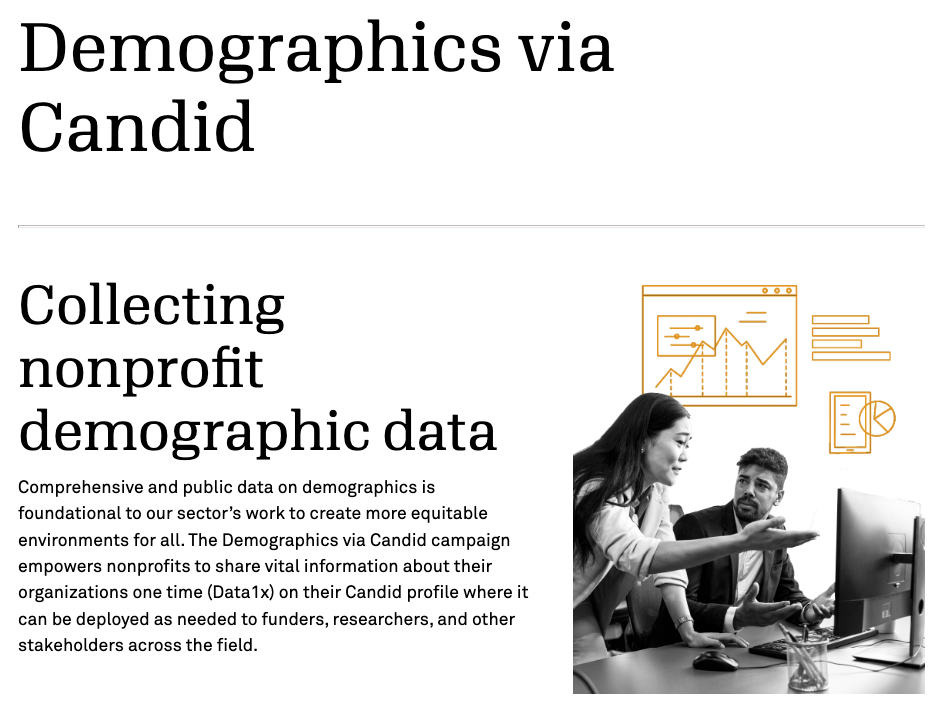GlassPockets at sunset: reflections from working at the intersection of power and light

This year, GlassPockets marks its 12th and final anniversary, as Candid will sunset the website on December 15, migrate its learning content to Candid Learning for Funders, and use new approaches to encourage funder transparency. I’d like to take a moment to offer history and lessons learned, the thought that went into this decision, and how we plan to evolve the effort for greater impact.
A bit of history
The name GlassPockets dates back to the 1950s when philanthropy leaders were in crisis, called before Congress to defend against McCarthyism-fueled accusations of committing “Un-American Acts.” As foundation leaders testified, they learned the difficult lesson that if you don’t tell your story, others will tell it for you.
As Russell Leffingwell, then Carnegie Corporation’s board chair, testified, “The foundation should have glass pockets.” This statement offered a vision in which greater foundation transparency would inspire admiration rather than suspicion.
This history seems worth revisiting. When we started the effort in 2010, only 6-7% of foundations had a website. Smart phones were growing in popularity, as people used them to connect with everything in the outside world—except for foundations, which were largely sitting out this digital revolution.
Fast forward to today
Today, 12 years later, that number has only grown to 10%. While GlassPockets has served to steadily motivate participating funders to share more information publicly, with only 112 participating foundations, the reality is that most funders opted not to participate. Further, over time, it became increasingly difficult to maintain GlassPockets profiles as individual websites were redesigned, resulting in broken links.
To fulfill the promise of the merger between Foundation Center and GuideStar to create Candid, we have expanded our view of transparency. We aim for a 360° sector-wide view via Candid’s Nonprofit Profiles on GuideStar. Earlier this year, we introduced new funder fields to make them better suited to documenting grantmaking activities. Through Candid’s Nonprofit Profiles, every organization can be represented regardless of its web presence. We will continue to offer learning tools, such as the transparency self-assessment and aggregate transparency trends from GlassPockets on Candid Learning for Funders, and we invite you to use them there.
Lessons from transparency trends
So, what is the state of foundation transparency today? Clearly, one of the biggest obstacles is that 90% of foundations still don’t have a web presence. Even when we looked at foundations with assets above $100 million, more than one-third lack websites. Why? Well, there is very little in the way of market pressure to force transparency in endowed institutions. Endowed foundations don’t have to fundraise to sustain their operations; they don’t have to sell products; and they don’t have to campaign for votes to stay in office. This power of the purse tends to result more often in insularity than transparency.
But 2020 changed everything, as philanthropy tried to reinvent its practices to address longtime disparities brought into sharper focus. As the field grappled with a racial reckoning and how to balance power and improve its record on diversity, equity and inclusion, transparency has become critical as a means to build trust and work in a spirit of partnership with stakeholders. But it’s still a challenge, with opportunities to learn from the exemplars who participated in GlassPockets, and to whom we are most grateful for their leadership.
The 112 GlassPockets profiles represent both the largest foundations–known to have an outsized influence on the practices and habits of their peers, large and small–and also small-staffed foundations keen to engage publicly about their efforts. GlassPockets participants have often shared that peer examples are the most helpful when making the case for openness internally.
Newly updated with data gathered from the 112 participating foundations, the Foundation Transparency Challenge infographic provides an at-a-glance inventory of transparency strengths and pain points, highlighting good examples that can serve as inspiration for others. What we learn from this view is that foundations struggle the most when it comes to sharing information about overall foundation performance, demographic data, executive compensation processes, and strategic plans.
From pain to gain
Even amid the pain points, there are encouraging signs of progress. For example, in 2017 only 40% of participating foundations were using their websites to share the knowledge gained from their work. Today, after a dedicated GlassPockets #OpenforGood campaign, funded by the Fund for Shared Insight, that category has shown the biggest gains with more than 60% offering knowledge centers as part of their websites.
When GlassPockets started, it was rare to find any reference to transparency on funder websites. But today, nearly half of participating foundations have created values or policies prioritizing transparency. These statements can be found among funders of all sizes and types.
Demographic data is another area where participating foundations have made gains, growing from 16% three years ago, to 22% today. We expect to see more foundations sharing their demographic data to live their values around diversity, equity, and inclusion.
What’s next?

As more foundations become interested in demographic data, this imposes an undue reporting burden on nonprofits. Given Candid’s own commitment to equity and transparency, we have launched a new Demographics via Candid (DvC) campaign to streamline these processes. This campaign aligns with the principle that nonprofits should only have to share their data one time, what we call Data1x, in an effort to leverage our collective data hub for sector-wide equity and efficiency. By providing data one time, on their Candid profile, that effort can have exponential impact as it is leveraged by multiple parties, thus unburdening nonprofits from the drudgery of completing multiple submissions with the same information.
This vision of a 360° view of the field is not just transparency for transparency’s sake, but a tangible way to help the field see the world and make it better, by scaling greater heights that offer sweeping views in sharper focus. In essence, we are zooming out from glass pockets to panoramic ones, and we hope to continue to see you there.






edmund says:
Very sorry to see Glasspockets sunset. This was a a great initiative of Candid's prior president Brad Smith. The reasons explained in this article make it clear that most foundations are not interested in being transparent in how they are serving humanity - or not. Instead due to lax regulation they remain an opaque self serving sector. Like dark money in poitics - and with few exceptions - too many foundations are unaccountable for how they spend their tax dodging money. Sad
Kate, Digital Communications Manager, Candid says:
Hi Jeffrey, while we cannot provide names of specific foundations, we do have resources to help you get started here: https://learning.candid.org/resources/knowledge-base/faith-based/. You could also try searching Foundation Directory.
jeffrey daly says:
Hello Janet,
My wife Laurie also graduated from Mills in 2006 with her doctorate in Educational Administration. She teaches at our local community college up here in Lake County California. We both have a belief in Christ which motivates our work. At present I'm executive director of a Christian nonprofit, National Day of Repentance, which seeks to encourage this repentance process individually and nationally. Question: do you know of any foundations which are open to proposals to provide grants for awakening and uplifting and cleansing, across denominations, the "church?"